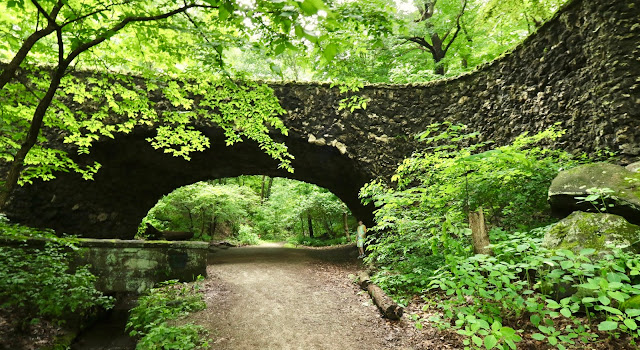 Phipps Conservatory and Botanical Gardens
Phipps Conservatory and Botanical Gardens has an annual Bioblitz event that is not to be missed.
Generally a "Bioblitz" is a comprehensive, 24-hour survey of a specific natural area with the intention of finding, identifying and documenting the biological diversity to be found there. Instead, the event at Phipps is more simply about giving visitors about a dozen opportunities to take short walks with experts in different fields. Visitors are encouraged to take photos and learn how to upload records to the
iNaturalist app, which as become the standard platform for nature surveys and a vital tool for citizen science. But the walks, which are mostly one hour in length, must just be just scratching the surface of what lives at Schenley Park. The focus is all about igniting curiosity about the natural world.
We joined a walk to look for spiders, lead by
Sebastian Echeverri, a doctoral student at Pitt who knows and loves spiders. We chose this walk because, let's face it, spiders are fascinating, and they aren't easy to learn about. There are about 400 known bird species in Pennsylvania of the roughly 900 in the USA, with many reliable guidebooks to help you identify them and learn all about their behavior. By contrast there are about 3,000 identified species of spiders in the USA. I have never been able to find any comprehensive guide books for North American spiders (at most there are brief chapters tacked on to insect guides) and I can't even track down an authoritative number of Pennsylvania species. So it was a treat to spend some time with an expert! Our walk didn't get far into Schenley park. That would have been pointless, since no matter where we went, we found spiders. It was proof that all you have to do is to start noticing to find marvels.
 |
| Crab spider. |
 |
| Moth mullein. |
 |
| Orchard orb weaver. |
 |
| Long-jawed orb weaver. |
 |
| Black firefly. |
 |
| White-marked tussock moth. Its flamboyancy says "don't touch me!", and it does sting. |
 |
| Goldenrod gall fly. |
 |
| Deptford pink. |
 |
| Flower fly. |
 |
| Daddy longlegs. |
 |
| A big eastern garter snake. |
 |
| Northern green frog. |
 |
| Bicolored agapostemon sweat bee on chicory. |
 |
| Crown vetch. |
 |
| Flower fly. |
 |
| Pale green assassin bug. |
 Phipps Conservatory and Botanical Gardens has an annual Bioblitz event that is not to be missed.
Phipps Conservatory and Botanical Gardens has an annual Bioblitz event that is not to be missed. 





















Comments
Post a Comment
Hello! I love to read your comments, but please be aware that they are moderated. This will result in a delay before they are posted. Thank you for your patience.